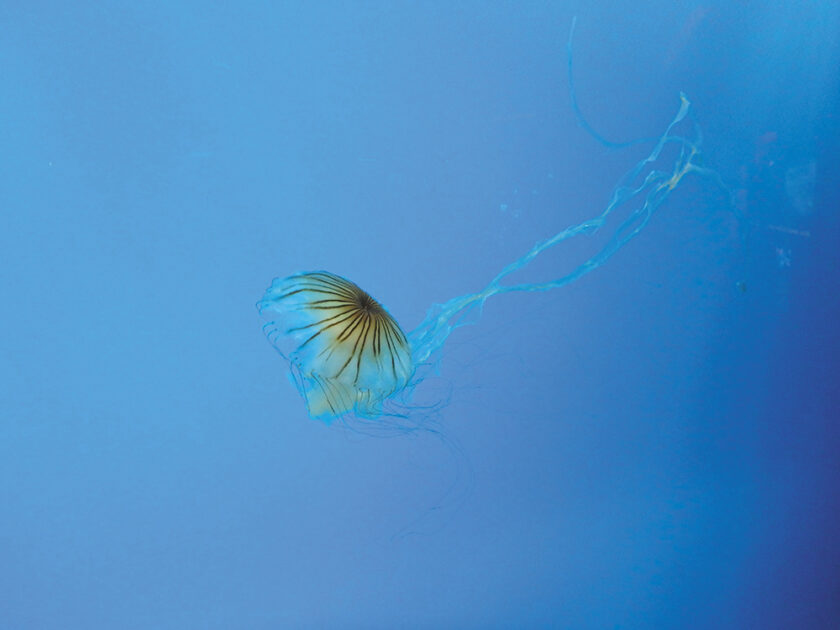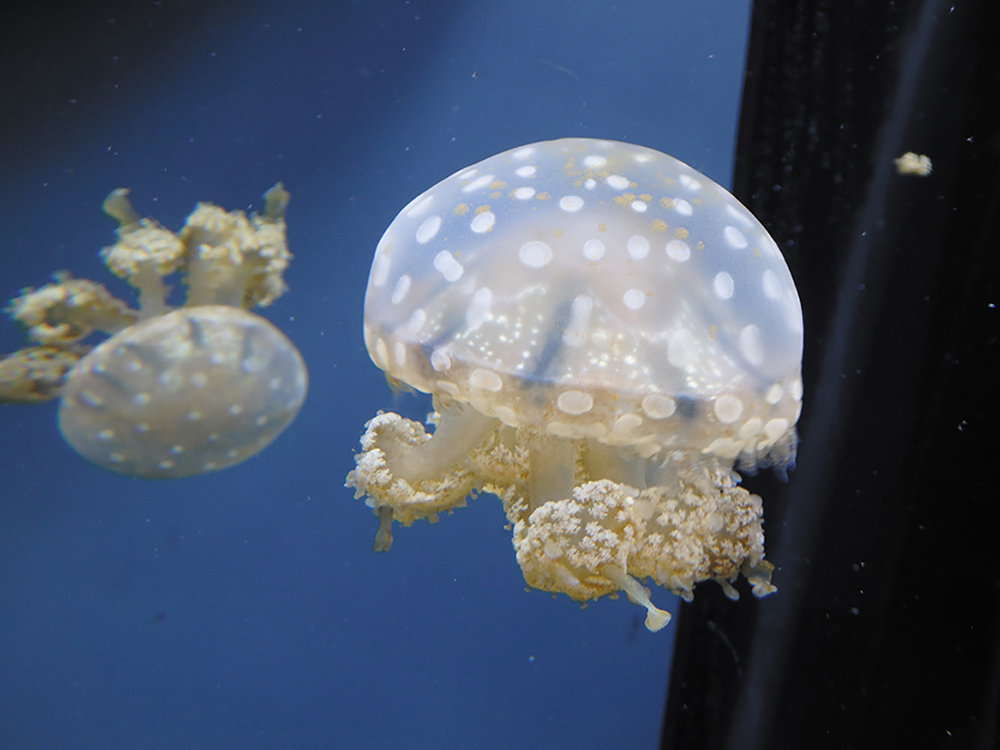By Steffen Klenk
Take a moment to picture your perfect beach day. The sun is out, you’re working on your tan and there’s sand between your toes. You decide to go for a swim in the ocean, until you notice an object lurking in the distance.
Coming into close encounter with a jellyfish may feel eerie, but there is nothing worse than being stung by one. The feeling of getting stung could ruin anyone’s day. Jellyfish prefer living near the surface of the ocean and thrive in warm temperatures. They typically begin to appear along the beaches around mid-August and mid-September.
Why does a jellyfish sting hurt so much? The answer hides in their tentacles. Jellyfish have a special cell that run along their tentacles known as cnidocytes. The cnidae in their tentacles produce venom that protects them from predators and subdue them.

The most common jellyfish you are likely to find wash up along our coastline is the moon jelly. They live up to a year in captivity and feed off of mollusks and plankton. Also known as Aurelia aurita, the moon jelly is known for its pink crescent-shaped underbelly.
Box jellyfish may be considered our worst enemy of the bunch. They have tentacles up to nine feet in length and can produce a painful, venomous sting to any of its prey.
Most jellyfish stings can be cured using affective treatment. In the event that you get stung by a jellyfish, medical experts advise rinsing the affected sting with vinegar water for at least 30 seconds. Then, using a pair of tweezers, remove the tentacle and soak the affected area in hot water for 20 minutes. Do not apply alcohol to the site or the sting. If you get stung by a box jellyfish or end up with a severe reaction, call 911 to seek urgent medical help.
These important tips will help to keep you and your family safe.
Steffen Klenk is a multimedia journalist. He resides in Ocean City and enjoys capturing the eclectic moments of shore life.






